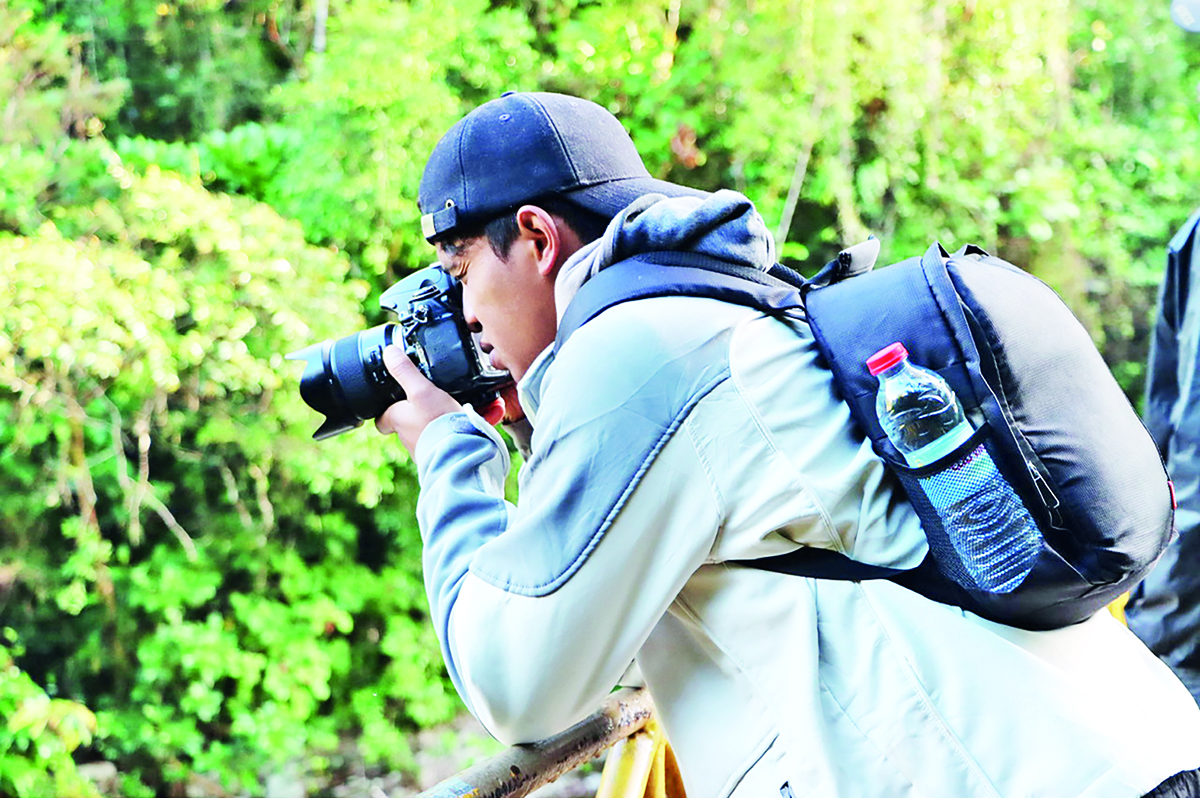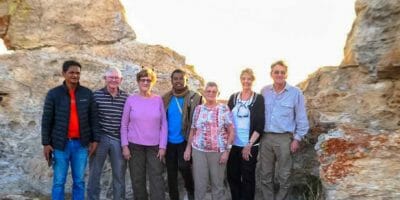 |
| Renewal of the collaboration for the third phase of the PIC with Madagascar National Parks. |
Madagascar welcomed 259,850 international tourists in 2023, or +97% compared to the previous year. And a good number of these visitors came to discover the green treasures of the Big Island. We also note that the number of entries into the country’s national parks and reserves has continued to increase over the past two years.
Madagascar has chosen to focus on different niche markets to better appeal to international travelers. And it is clear that among the most promising niches, ecotourism remains in pole position. For professionals in the sector, green tourism remains a sure value and actively contributes to accelerating the recovery of tourism. “The Big Island, as a leading ecotourism destination, remains very popular. After the health crisis, the sector experienced a strong recovery and the trend should continue for a long time to come,” says Jean Yvon, a receptive operator based in Menabe.
Note that the Big Island has “monopolized” the prize for “Best Green Destination in the Indian Ocean” (Indian Ocean’s leading Green Destination) from the World Travel Awards for 7 years now. According to informed observers, this is a recognition of the tireless efforts made for years by all stakeholders in Malagasy tourism. We also know that Madagascar occupies 9th place in the ranking of the twenty-five best islands in the world to visit in 2024 by the prestigious American travel blog US News Travel. And Madagascar’s exceptional biodiversity is strongly highlighted in this ranking: “… This island in the Indian Ocean, located off the east coast of Africa, is home to more than a hundred species of lemurs, as well as species rare frogs, birds, chameleons and plants which make it one of the richest places in biodiversity in the world…”, we can read in the comment motivating this selection.
Madagascar is also among the best places to travel in 2024, according to the list unveiled by Outside magazine. This ranking results from travels undertaken by the magazine’s expert editors around the world, who selected twenty-three exceptional destinations, from which Madagascar was chosen. The country has, once again, seduced by its unique biodiversity, as Outside Magazine points out: “The island offers significant adventure potential in a natural environment,” reported the Outside team which discovered sites exceptional sites such as the Masoala National Park in the North-East, the Namorokoa National Park in the North-West, as well as Anakao. They also carried out helicopter flights to remote sites such as the Tsingy Rouge Reserve.
Establish a “strong culture of conservation”
Please note that when we talk about green tourism or ecotourism, the role played by the country’s network of protected areas is essential. National parks attract the majority of travelers who come to discover the country’s natural riches. And it’s not just international tourists, because more and more Malagasy people are practicing ecotourism. It is Madagascar National Parks (MNP) whose main mission is to establish, conserve and sustainably manage the network of forty-three parks and reserves representative of the jewels of biodiversity and natural heritage specific to the Big Island. .
For some observers, the rebound in the ecotourism market should be used to further promote high-end green tourism while establishing a “strong culture of conservation” in the country. This approach is presented as a necessity and no longer a choice. The tone is thus set. The preservation of the country’s protected areas should be strengthened. “We will do everything possible to reduce pressures, such as fires and illegal logging, which affect the jewels of biodiversity by up to 75 or even 80%. Instructions have been given to the first officials on the ground to act in this direction,” the MNP said on this subject.
On the Cétamada side, we are also working to better preserve marine resources. The interministerial decree co-signed by the ministries of Tourism and Crafts, Environment and Sustainable Development, as well as that of Fisheries and the Blue Economy, setting out the provisions on the observation of marine megafauna , is now in force. Officially presented by this organization mandated to supervise all observation activities at sea, this text reinforces existing regulations on the responsible observation of whales, whale sharks and turtles, thus completing the whaling ecotourism model established from the beginning 2000s in Madagascar.
The Foundation for Protected Areas and Biodiversity of Madagascar (FAPBM) also helps develop ecotourism in the country. Nearly 3.2 million hectares are today financed by the Foundation, or almost half of the existing protected areas. Its contacts are both large entities dedicated to environmental protection and small grassroots associations.
The FAPBM finances, among other things, local development activities carried out with neighboring communities in order to compensate for possible losses of income due to the establishment of these protected areas. Certain income-generating activities, starting with ecotourism, are prioritized. The Foundation also aims to be a fund management mechanism for projects such as the Lemurs Portal, the information and data portal on lemurs.
 |
| Madagascar has won the “Best Green Destination in the Indian Ocean” award seven times. |
Strengthen promotion
The Madagascar National Tourism Office (ONTM) believes, for its part, that the sustained efforts to promote the island as a world-class green destination are bearing fruit. And the structure in charge of promoting the Madagascar destination intends to increase initiatives in this area. We therefore know that a film crew from France Télévision is in our walls to produce a report on the activities of the private zoological park Lemurs Park. The French television channel pays particular attention to the environmental education program set up on the site. This report will be broadcast on France 2.
Located 25 km from Antananarivo, Lemurs Park was founded in 2001 with the aim of raising visitors’ awareness of the different species of lemurs present in Madagascar. The park is home to nine species of lemurs, both diurnal and nocturnal, from various regions of Madagascar. Extending over 5 hectares of wooded land, this tourist site also has more than seventy species of plants, including around forty endemic to Madagascar. Lemurs Park works closely with the Ministry of the Environment, which entrusts it with lemurs captured in tropical forests or victims of mistreatment.
The Ministry in charge of Tourism has also expressed its desire to strengthen the promotion of the Madagascar destination by always focusing, among other things, on the ecotourism potential of the country. This department which recently declared that tourist arrivals at the borders are showing constant growth, testifying to an effective resumption of tourism in the Big Island. According to this data, 22,333 tourist arrivals were recorded during the first two months of 2024.
“This statistic marks a clear increase compared to the same period of the previous year, when Madagascar recorded 19,348 tourist arrivals. The performance of the sector is now closer to that of 2019, during which 25,068 tourists were recorded during the same period,” indicated the ministry before noting that fifty authorizations to open accommodation establishments and catering were issued during the month of February 2024. Several eco-lodges appear in this list.
 |
| More and more tourists are coming to discover the natural riches of the Big Island. |
Madagascar National Parks and the PIC project marked the renewal of their collaboration for the third phase of the “Economic Transformation Project for Inclusive Growth” or PIC3 which will extend over 3 years. The beneficiary National Parks will be Analamazaotra and Mantadia, Montagne d’Ambre and Ranomafana. The signing of the partnership agreement was held at the Madagascar National Parks Headquarters in Ambatobe, on April 2, 2024.
The Director General of Madagascar National Parks, Ony Rakotoarisoa, expressed her appreciation for previous achievements with PIC and hopes to strengthen cooperative ties for years to come. For his part, the national coordinator of the PIC project, Ladislas Adrien Rakotondrazaka, supported the presence of efficiency and productivity during the two phases of the project with MNP.
“The PIC Project has supported Madagascar National Parks since 2008 in carrying out activities focused on tourism, one of the growing sectors, for the development of ecotourism in Nosy Tanihely National Park as a pilot site during PIC1. Then the project was extended to four protected areas including Ankarana, Montagne d’Ambre, Nosy Hara and Tsimanampetsotse. It was the introduction of PIC2,” we recalled during this signing ceremony.
Through this new partnership, Madagascar National Parks and PIC will collaborate to bring tourism infrastructure up to standard, diversify and improve the quality of tourist services, promote investments as well as promotion and visibility.
As a reminder, when it was created in 1990, its name was Angap or National Association for the Management of Protected Areas. It was subsequently renamed “Madagascar National Parks” in 2008. In addition to changing its name, the organization underwent a structural transformation adopting an approach to conservation aimed at reconnecting humans with nature. MNP, under the supervision of the Ministry of the Environment and Sustainable Development, is an association mandated by the State to manage forty-three protected areas throughout the national territory. Its mission is to establish, manage and conserve in a sustainable manner these Malagasy protected areas and therefore the natural resources found there.
Sustainable conservation includes maximizing the socio-economic benefits obtained by Protected Areas such as the development of ecotourism and minimizing long-term environmental impacts. The stakes are high because the future of our natural heritage depends on conservation actions in our Protected Areas.
These actions mainly focus on controlling pressures through the control and surveillance of Protected Areas and the prosecution of crimes through the involvement and support of surrounding communities, local authorities and partners. Among the forty-three Protected Areas under the management of MNP, there are twenty-seven national parks of terrestrial and marine types, fourteen Special Reserves and two Strict Nature Reserves.

Joël Randriamandranto, Minister of Tourism and Crafts
“Observing marine mammals such as whales and dolphins constitutes a new offer allowing the development of the ecotourism sector. This is a tourism product in its own right allowing us to contribute to achieving the objective of one million tourists in 2028. This is why we support the signing of this interministerial decree with a view to protecting marine mammals. As I often remind you, tourism in Madagascar should be a means of preserving our natural heritage for future generations. »

Dr Vahinala Raharinirina, special advisor to the President of the Republice
“From a sustainable development perspective, the environment, the economy and the social sphere are inseparable and complementary. In this sense, ecotourism which is a form of tourism centered on the discovery and preservation of nature and local cultures is living proof of this link. Ecotourism can be a powerful booster of our economy, if the required conditions are met. »

Madagascar Express











